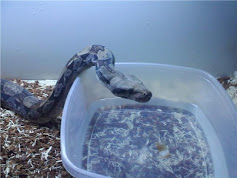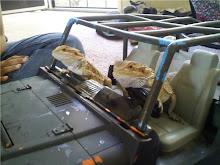The Physignathus cocincinus or the Chinese water dragon is also called by other names that include Asian water dragon and Green water dragon. Native to the Asian continent, Chinese water dragon are a sub-species of the Physignathus lesueurii or water dragon, which is mainly found in Australia. Their life span varied from ten to twenty years.When it comes to size, adult males reach lengths of about 3 feet including the tail, and the females tend to be smaller, reaching lengths of about 2 feet. A major portion of the overall length of the Chinese water dragon is made up of the tail.What do Chinese Water Dragons look like?Chinese water dragons or green water dragons are generally green in color, but can range from a dark green to a lighter shade of green. You’ll always find vertical slanted stripes of either turquoise or green on the lizard’s body.The belly is usually white or pale yellow in color and their distinguishing features are their throats that are very colorful, ranging from yellow to orange to peach. The tails are long and narrow and have green and brown bands and are generally used as powerful weapons that the dragon uses to defend itself. In comparison, the adult males have larger heads than the adult females and have larger crests on the backs of their head and neck.Caring for your Chinese Water DragonGreen water dragons make some of the best pets ever! If you are planning on keeping a Chinese water dragon as a pet, here are a couple of tips to help you when caring for your new found pet:
Enclosure – Chinese water dragons need big enclosures. The smallest sized enclosure you can get for an adult is an enclosure that is 6 feet in length, 3 feet in depth and about 6 feet in height. But remember that these enclosures will have to be custom made and are going to be expensive. Until and unless you find out what your dragons sex is, it would be better to keep only one dragon – a male and a female will generally get along, but two females or two males will always display aggression unless they are given a lot of space.
Furnishing the Enclosure – For safety purpose, choose furnishings that wont cause any damage if ingested. Potting soils should be sterilized and covered with sphagnum moss, which is good for humidity. A good mix of soil, peat, sand, cypress mulch, paper and Astroturf is also good. Lots of branches should be put in for climbing purposes. Plants like hibiscus, pothos, staghorn ferns, dracena, and ficus also make good additions.
Water and Humidity – Chinese water dragons need a lot of water. The water source should be deep and large so that the dragon can comfortably submerge itself in it. Clean the water on a daily basis. Humidity should be kept at around 80 percent and the enclosure needs to be misted at least once or twice daily. Live potted plants will help with the humidity.
Lighting and Heat – Ideally, daytime temperature should be kept somewhere between 84 – 88 degrees F, with a spot for basking at 90 degrees F. The night temperatures should be dropped to 75 – 80 degrees F. A combination of ceramic heat element, basking light, under tank heat tape and heat pads should be used. A UVA/UVB fluorescent lighting fixture can also be used. Feeding Chinese Water DragonsYou can feed your dragon anything from mealworms, earthworms, butter worms, and wax worms to crickets, grasshoppers and locusts. Adult dragons can be fed kingworms and pinkie mice. All insects should first be gut loaded. It is best to discourage your dragon from catching wild insects and fireflies as they are all potentially toxic. A small amount of chopped fruits and vegetables can be offered. Try dandelion, mustard greens, collards, parsnips, carrots, sweet potato, and yellow or orange squash.Fruits should be fed in smaller quantities than vegetables – strawberries, mangos, figs, raspberries, cantaloupe and papayas are ideal.Juveniles and hatchlings have to be fed daily, and adults can be fed every second or third day. The best way to figure out how much to feed your Chinese water dragon is to analyze its body condition – chubby dragons should be fed less while the skinnier ones should be fed more. Calcium and vitamin D3 supplements are also good for the dragons.
About Me
Boa.jpg)
- iReptiles
- This site is for educational purposes only, and to built a reptile community for all the reptile lovers out there. I also do reptile rescue, reptile sitting (short and long term), and reptile extraction, lol but it happens. I'm in San Diego, and if you need to give up your reptile, for whatever reason, give me a call at 619-971-6672, and my name is Cisko.
Wednesday, November 11, 2009
Subscribe to:
Post Comments (Atom)



No comments:
Post a Comment